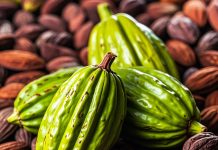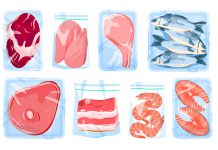 The aim of this work was to compare the peculiarities in the cup of a standard Brazilian coffee with those of roasted coffee at three different levels of colour and temperature, and extracted with a professional espresso system. But not only that.
The aim of this work was to compare the peculiarities in the cup of a standard Brazilian coffee with those of roasted coffee at three different levels of colour and temperature, and extracted with a professional espresso system. But not only that.
By Fosca Vezzulli, Milena Lambri*
As experts perfectly know, coffee is the world’s most widely consumed beverage, and the coffee sector is strongly and ambivalently affected by its inseparable link to the origin of the raw materials used. The coffee market, the third commodity by value traded on the global markets and the first in the food sector, moves annual volumes equal to more than USD 100 billion, with an ever-increasing production that, in 2020, stands at 172,000 bags (ICO data) divided respectively between Arabica and Robusta with a 70-30 ratio.
Traditionally, Italy is considered, even in a self-referential way, the homeland of coffee thanks to the historicity that links Italy to a particular extraction system, the Espresso, which has its origins in the beginning of the last century in the north of the peninsula. Thanks to easier trade, even the culture of the Italian Coffee has been gradually spreading, and has become contaminated with consumption habits coming from European and non-European areas, where consumption habits are very different; often constructive interferences were born.
Although the stereotype of Italian coffee is always that of the typical coffee of the south of the peninsula, obtained with a lever machine and a secret coffee blend (but often characterized by a good percentage of “robusta” coffee), obtained with traditional roasting, with medium-long processing times, until temperatures are reached that degrade the almost totality of the organic acids that characterize the green bean and a sufficiently dark colour to allow the production and subsequent extraction of compounds with a strong bitter connotation and the characteristic striped cream on the surface, the Italian consumer is beginning to discover and appreciate the notes that characterize coffees that are very different from the coffee enjoyed by previous generations.
Since the beginning of the 21st century, in fact, commercial coffees, those sold on the London and New York stock markets, have been flanked, for a very small but significant market share, by coffees sold directly by producers or small local cooperatives to exporters or roasters who, thanks to their quality certification guaranteed by the Specialty Coffee Association (SCA) and the Coffee Quality Institute (CQI), have been able to obtain more profitable selling prices against a much higher quality and reliable traceability of the batches, making it possible to obtain single-origin Arabica coffee with peculiar aromatic notes, which are enhanced almost exclusively by their pure consumption: In other words, the Specialty Coffee movement was born.
 How roasting can enhance the peculiarities of a Specialty Coffee
How roasting can enhance the peculiarities of a Specialty Coffee
It is certainly not easy to appreciate these high quality coffees extracted with filter systems or percolation in a market that has never been in mass contact with alternative extraction systems, other than espresso, often characterised by weaker and lighter body and much higher volume of the beverage, or with light roasting processes that enhance characteristics such as acidity, sweetness and floral-fruity notes in contrast to those sought in the “Espresso Italiano”. This is why a technical approach that mediates the two extremes is needed to obtain a high quality beverage, appreciated by the consumer.
The way proposed here is to optimize the roasting technique to best enhance the characteristics of these highly selected coffees when they are extracted in an “espresso mode” and served to a consumer who is not yet familiar with extreme aromatic taste perceptions for the reference beverage. One of the objectives of this work, carried out as part of a master project focused on the chemical-physical and sensory characterization of
Specialty coffees subjected to three different types of roasting, was to compare the peculiarities in the cup of a standard Brazilian coffee, with those of coffees roasted at three different levels of colour and temperature and extracted with a professional espresso system. In addition, the results obtained also allow the comparison and correlation of the descriptors identified by professional tasters upstream of the supply chain with those provided by a more heterogeneous panel that approaches coffee just as the final consumer does (evaluating subjective hedonistic descriptors for this purpose and not only the mere objective indicators we find in the tasting cards provided by SCA and CQI).
 Results of a scientific-technical survey
Results of a scientific-technical survey
The approach described above was first applied to 8 different green coffee samples from as many different origins and producers and subjected to washed or natural post-harvest processes. The samples, procured and roasted thanks to the collaboration with the roasting company Musetti, of Arabica coffee species and from the Specialty chain, were accompanied by a data sheet with the SCA score and a descriptive sensory profile which were used for the subsequent correlations.
After checking the routine chemical/physical parameters and the absence of physical defects on the green sample, three roasting levels (light, medium and dark), which differed only in the duration of the development phase after the first crack and thus in the final temperature, colour and time (Tab 1), were applied using a traditional 6-kg drum roaster.
This approach, as is well known from literature, should correspond to different aromatic profiles derived only from chemical changes attributable to the third stage of roasting, that of aromatic development, and therefore derived from the same aromatic precursors developed, with the same raw material, from reactions (the main ones, those of Maillard) which occurred with a good approximation uniformly in the first two roasting stages.
Before tasting the samples, the results of the roasting at incremental intensities were validated, verifying the evolution of the physical parameters of weight loss, increase in volume and loss of humidity on all roastings performed. The results obtained from the sensory analysis carried out by dividing the samples by roasting level, allowed to highlight the impact that the thermal process has on the different references of green coffee.
 After a first statistical analysis of the results of the sensory analysis, the scores obtained by the different descriptors allowed the clustering of the different Espressos into three sub-groups composed of homogeneous roasted coffees: This is evidence of the strong impact given to the cup by the chemical transformations that characterize such an intense heat treatment. As can be seen from the spider graphs (Figure 1), in roasted coffees with less impacting processes (light – Figure 1. a – and medium – Figure 1. b -), the differences between the samples are maximized. This can be seen from the dispersion of scores on some key indicators such as acidity, vegetable and roasting in light coffees, and cream colour intensity, body, acidity and nuts in medium roasted samples.
After a first statistical analysis of the results of the sensory analysis, the scores obtained by the different descriptors allowed the clustering of the different Espressos into three sub-groups composed of homogeneous roasted coffees: This is evidence of the strong impact given to the cup by the chemical transformations that characterize such an intense heat treatment. As can be seen from the spider graphs (Figure 1), in roasted coffees with less impacting processes (light – Figure 1. a – and medium – Figure 1. b -), the differences between the samples are maximized. This can be seen from the dispersion of scores on some key indicators such as acidity, vegetable and roasting in light coffees, and cream colour intensity, body, acidity and nuts in medium roasted samples.
In the darker roasting cluster (Figure 1. c) we can see a greater concentration around an average value of the sample scores for the objective key descriptors in our analysis. As for the olfactory perception and after aroma, our data-set has clear floral and fresh fruit notes, one of the most sought after descriptors of Specialty coffees, and very popular also in espresso as opposed to the high acidity levels. It is interesting to note how, on this particular point, the medium roasting maximized the quality and intensity of the floral-fruity note, placing itself as the best treatment to enhance the peculiarities of these specific raw materials.
In confirmation of what was said in terms of optimization of the roasting process, there was a minimization of undesirable notes such as astringency, bitterness and vegetal notes, which characterize coffees from roasting processes that are either too light or too dark. In the first case, these perceptions are due to a lack of degradation of chlorogenic acids and to a missing or incomplete processing or flavour precursors and aromatic molecules, because the minimum time and temperature required for the purpose were not reached. In the second case, they are due to excessive and prolonged exposure to heat, which favours pyrolytic reactions on fibrous structures and the degradation of aromatic molecules developed during roasting.
Even the hedonic indicators confirm the good acceptance of these products by consumers not used to specialty coffees. Returning to the subject of the peculiarities of green coffees analysed in the test, a comparison between the data obtained by the panel used to build-up the descriptive profile of the different espressos and those provided by the producers concerning the “in the cup profile” of individual batches, there is a good correspondence between what was perceived and what was expected both for the light and the intermediate roasting level.
However, with regard to the first, the prevalence of the acid note often masks aromas perceptible by direct olfactory and, more significantly, by retro-olfactory perceptions. After the identification of the roasting level that best balances the characteristics of the raw materials and consumer expectations, the aqueous extract of the coffees was chemically evaluated for two fundamental but easily quantifiable parameters, such as melanoidins and pH, to correlate the perceptions obtained and the roasting data, in order to obtain indicators that can be readily used to verify the achievement of the desired roasting level on different batches of the same reference. Further investigations were carried out to complete the study.
Conclusions
The approach applied allows to evaluate the process of high quality coffee processing, in order to identify the roasting curve suitable to enhance the characteristics of an expensive product but which, if appreciated by the consumer, can lead to attractive revenues.
It confirms the imperative need for continuous monitoring and recording of roasting parameters to have an accurate comparison and reference, both in the event that changes are needed and to keep the roasting result constant.
The correlation between sensory and process data, even if not essential at all levels, is then of great impact to verify the behaviour of different batches and increase the know-how on their production process and supply chain that becomes, so, value chain.
*Department for Sustainable Food Process – DiSTAS, Università Cattolica del Sacro Cuore, Via Emilia Parmense 84, 29122 Piacenza, milena.lambri@unicatt.it



